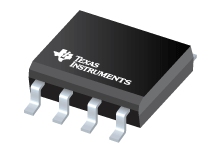Datasheet Texas Instruments SN65HVD1050-Q1
| Manufacturer | Texas Instruments |
| Series | SN65HVD1050-Q1 |

Automotive Catalog EMC Optimized CAN Transceiver
Datasheets
EMC-Optimized CAN Transceiver - SN65HVD1050-Q1 datasheet
PDF, 799 Kb, Revision: C, File published: Dec 20, 2010
Extract from the document
Prices
Status
| SN65HVD1050QDRQ1 | |
|---|---|
| Lifecycle Status | Active (Recommended for new designs) |
| Manufacture's Sample Availability | Yes |
Packaging
| SN65HVD1050QDRQ1 | |
|---|---|
| N | 1 |
| Pin | 8 |
| Package Type | D |
| Industry STD Term | SOIC |
| JEDEC Code | R-PDSO-G |
| Package QTY | 2500 |
| Carrier | LARGE T&R |
| Device Marking | H1050Q |
| Width (mm) | 3.91 |
| Length (mm) | 4.9 |
| Thickness (mm) | 1.58 |
| Pitch (mm) | 1.27 |
| Max Height (mm) | 1.75 |
| Mechanical Data | Download |
Parametrics
| Parameters / Models | SN65HVD1050QDRQ1 |
|---|---|
| Bus Fault Voltage, V | -27 to 40 |
| Common Mode Voltage, V | -12 to 12 |
| Features | High Speed,Vref Pin |
| HBM ESD, kV | 4 |
| IEC 61000-4-2 Contact, +/- kV | N/A |
| Isolated | No |
| Low Power Mode | Silent |
| Operating Temperature Range, C | -40 to 125 |
| Package Group | SOIC |
| Protocols | CAN |
| Rating | Automotive |
| Signaling Rate(Max), Mbps | 1 |
| Supply Voltage(s), V | 4.75 to 5.25 |
Eco Plan
| SN65HVD1050QDRQ1 | |
|---|---|
| RoHS | Compliant |
Application Notes
- Common-Mode Chokes in CAN Networks: Source of Unexpected TransientsPDF, 230 Kb, File published: Jan 29, 2008
Common-mode chokes are frequently used in automotive CAN networks to increase system reliability with respect to electromagnetic compatibility (EMC). Electromagnetic interference emitted from an Electronic Control Module (ECU) through the CAN transceiver can be filtered, thus limiting unwanted high-frequency noise on the communication bus. Another reason for using a common-mode choke is attempting
Model Line
Series: SN65HVD1050-Q1 (1)
Manufacturer's Classification
- Semiconductors> Interface> CAN Transceivers
